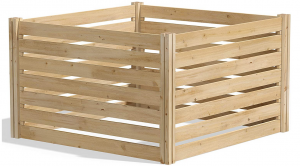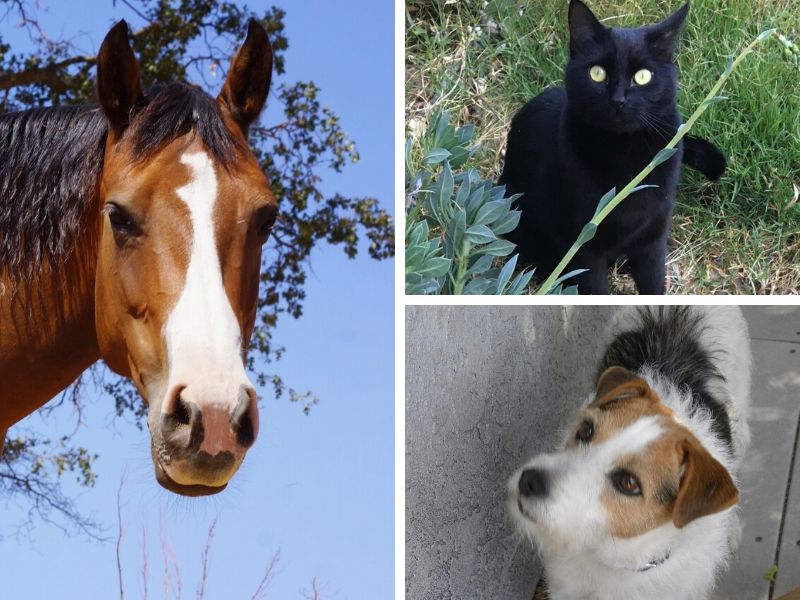“With all this manure,” the little boy replied, beaming, “there must be a pony in here somewhere!” Where there is poop, there is a pony. We can all attest to the fact that our horses and ponies manufacture a mountain of ugly horse manure which grows daily. In fact, on average, a horse plops about 50 pounds of fresh manure a day! Horse manure composting is a best-practices method of managing the manure mountain.
Do you have a horse manure factory in your backyard? What do you do with all that horse poo? The best management practice is to turn that mountain of horse manure into a mound of beautiful mulch through horse manure composting. That mulch will be in high demand. In fact, gardeners will gleefully grab the gold!
Building a Mountain of Horse Manure is Not Best-Practices

Building a mountain of horse manure on bare soil and just letting it grow without any management is not an effective way of managing a mountain of horse manure. There are loads of issues with an unmanaged pile of horse manure. With this scenario:
- Leachate can easily seep down and contaminate the local water table.
- All that exposed manure is a fine breeding ground for fly larvae.
- In addition, parasite eggs, weed seeds and pathogens will be left unaltered.
- In an unmanaged manure pile the decomposition process takes much longer so the pile breaks down over a long period of time while developing a stench from the gaseous fumes generated by the unmanaged pile.
- Piling fresh manure on top results in a growing mountain of manure, that gets larger day by day.
What Do You Do with All That Horse Poo?
Turn that mountain of manure into a mound of mulch in a short period of time through horse manure composting. Composting horse manure actually turns the animal waste into a desired end product that could be sold. However, composting does require some management, but once a system is set up it’s pretty easy to manage. You’ll mostly just reap the benefits of scooping poop and turning it into beautiful compost gold.
Need some tips on how to manage your manure factory? Get the Horse Manure Composting Tip Sheet < here.
Develop a horse manure composting plan
Just piling up the horse manure is not composting. Composting is managing the components to speed up the decomposition process. Managing horse manure through composting is also beneficial to the environment by:
- Eliminating fly larvae, parasite eggs, and weed seeds plus killing off pathogens.
- Reducing the development of leachate which contaminates water tables.
- Reducing odor because properly composted manure does not develop stinky gases like Ammonia and Sulfur.
- On top of these benefits the mountain breaks down into a mound about 50% of the original size in 2-8 weeks (depending on management choices).
Managing composting is actually easier than you might think. Up front it takes some planning and materials, but the naturally-occurring elements of horse manure are ideal for horse manure composting.
Composting horse manure is green all around. It’s good for the environment and can put green bucks back into your pocket. Some facilities pay a fee to have the manure carted off the premises. This creates an additional expense. Developing a horse manure management plan which includes horse manure composting could lead to the elimination of paying a service to cart off horse manure. In fact, it could even be possible to get payment for taking the gold off your hands! The best part is that you have a steady supply of the raw material going through your manure factory.

What Is Needed to Turn Mountains of Horse Manure into Mounds of Compost Gold?
There are several things needed:
1. Lots of horse manure is needed
Luckily horse owners and stable managers have an ample supply. Why is horse manure such a great thing to compost? It has a nearly perfect ratio of Carbon to Nitrogen (C:N 25:1). Being nearly perfect means, nothing has to be added to the compost to ensure the microbes are working their magic. However, the addition of wood shavings or foliage will skew the C:N balance making it necessary to add ingredients to re-balance the system. Therefore, unless the ratio needs be adjusted because of other ingredients going in, only horse manure should go into the horse compost bins.
2. A Compost Management System
A 3-Bin Composting System
The best system is comprised of three bins, ideally set to take advantage of gravity to fill them. One bin, the composting bin, is for the fresh manure to be added (3-4 feet high), while the next bin, the curing bin, sits and matures and the third bin, the customer bin, holds the small mound of beautiful mulch ready to enhance someone’s garden. Smaller operations (1-3 horses) could get by with a two-bin system.
What else is needed besides the bins?
- A Cement floor – in a large enough area to be the base for the bins. Cement retaining walls could also be part of this design. Proper manure management decreases the amount of leachate a pile will excrete. However, SLO County Code Section 22.30.090.G.2 Animal Keeping – Erosion and Sedimentation Control requires a cement base for horse manure piles.
- A cover that lets in Oxygen – Compost tarp or roof with a slant.
- Bin walls and adjustable front walls – cement block/cinder blocks and/or treated wood planks.
- Oxygen to get into the pile throughout the composting process – this is a key component of creating the proper environment for the naturally occurring microbes to work their magic.
A Way to Conquer the O2 Beast Component
Choose an O2 composting aeration method
- Mix and stir the pile (labor intensive)
- Incorporate a forced-air, professionally installed O2 infiltration system such as O2 Compost. (effective but more $. A good option for a large stable.)
- PVC pipes with holes used as “sideways smoke stacks”. This method does not shorten the time it generally takes to decompose the manure.
- Break down the manure before it goes in the compost pile. Ingenuity may be needed here. This component speeds up the decomposition process and takes care of the additional need for Oxygen throughout the pile. If the manure balls are broken down before entering the bins then the size and space needed for the compost bins is greatly reduced. This option also shortens the composting time. Two weeks is the short time frame needed to fully mulch a mountain of horse manure when the manure is broken down before it goes into the compost bin.
Get more info and implementable ideas for O2 aeration in the Step-by-Step Horse Manure Composting Guide.
Hey, head’s up. Purchasing products through clicking the the links or product pics that follow may result in providing us a little kick-back money. To learn more see the affiliate disclaimer near the end of this story.
3. The Right Balance of Food for the Magic-Making Microbes
Woo hoo lucky you, horse manure has the perfect balance of C:N at 25:1 which is ideal for compost. This means you don’t have to mix anything else with it. It’s perfect just as it comes out of the . . . um, “box”! Just keep the stall shavings, wood and foliage out of the horse manure compost pile to keep the C:N balance.
4. The Right Moisture
Fresh horse manure has enough moisture, but the pile needs to be protected from drying out in the sun or becoming soaked with additional moisture. So a roof cover or compost tarp is needed.
5. The Right Temperature

The microbes generate a lot of heat when they are busy during the active phase. This temperature (130-160 degreeds F) kills off fly larvae, weed seeds, parasite eggs and pathogens. To ensure the compost is keeping the right temperature range a compost thermometer should be inserted in several places a few times a day as you adjust your management technique.
6. A Market for the Beautiful Mulch
Once gardeners find out about the beautiful mulch you are creating; they will come clamoring for it. Gardeners gleefully grab the gold! Your own garden will flourish with the addition of your mulch. Finding and developing a market for it can put money back into your horse enterprise operation. Today, the retail price of compost is about $25-35 a cubic yard. A Compost to Customer Marketing Plan outline of questions is part of the Step-by-Step Horse Manure Composting Guide.
What about Manure Management Tools?
Yes, even though composting will turn your horses’ manure into gold, the “raw material” still has to be scooped. Sorry. However there are some tools that can make the job a little easier, perhaps even fun! Here are a few items that can make poop scooping an easier task.
A good manure rake makes all the difference.
A handy, helpful Gorilla Dump Cart which dumps itself could be your new favorite thing.
Need to move lots of manure, feed or equipment? The Rubbermaid Yard Cart can handle the big loads with ease while making dumping manure easy on you too.
Want an out-of-the box compost set-up? This cedar wood composting bin kit plus the add-on kit is suitable for stables with three or less horses.
Looking for a way to spread that gold over your pastures without the worry of reseeding weeds or re-introducing parasites and pathogens? Try the Newer Spreader.
Tired of poop scooping? Is it hard on your body? Try a manure vacuum. Really, there is such a thing! The added bonus with a manure vacuum is that it easily breaks down the manure before going into the compost pile. This shortens the composting time and takes care of the O2 beast.
Just so you know, clicking the above pictures and product links takes you to the product on the Riding Warehouse and Amazon websites. This makes shopping easy and convenient for you. We do get a little kick-back from items purchased, giving us resources to bring you more stories, but your price stays the same. It’s a win-win! Also for local riders, sometimes you can order items online and request pick-up – during checkout – at the Riding Warehouse store in San Luis Obispo. Happy Trails!

Easily manage all that horse poo through horse manure composting. This tip-sheet will help you get going with the best-practices for turning manure into gold in your backyard. You will become a member of the SLO Horse News herd where you’ll stay abreast of all the riding activities in our beautiful SLO County. Get your Horse Manure Composting Tip Sheet < here.





